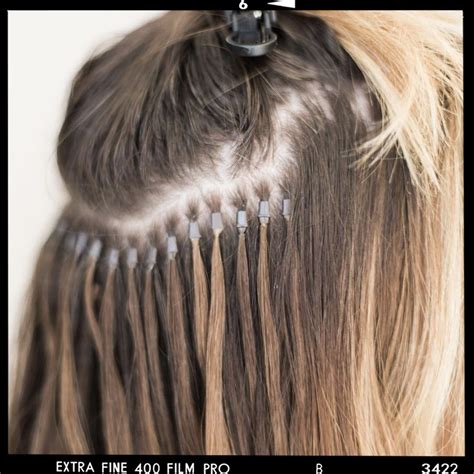Are you concerned about thinning hair? You’re not alone. According to the American Hair Loss Association, over 50 million men and women in the United States experience hair loss.

Hair thinning can be caused by numerous factors, including genetics, hormonal changes, medical conditions, and lifestyle choices. While there is no cure for hair loss, there are a number of treatments available to help slow the process and improve the appearance of your hair.
One of the most popular treatments for hair thinning is hair extensions. Extensions can add volume and length to your hair, making it look thicker and fuller. However, not all extensions are created equal. Some extensions can actually damage your hair, making it even thinner.
Types of Hair Thinning Extensions
There are two main types of hair thinning extensions: clip-in extensions and bonded extensions.
Clip-in extensions are the easiest type of extensions to apply and remove. They simply clip into your hair, so you can wear them for a few hours or a few days at a time. Clip-in extensions are a good option for people who want to add volume and length to their hair for special occasions.
Bonded extensions are semi-permanent extensions that are applied to your hair using a bonding agent. Bonded extensions last for several months, and they can be styled like your own hair. However, bonded extensions can be more expensive than clip-in extensions, and they can damage your hair if they are not applied properly.
Pros and Cons of Hair Thinning Extensions
Pros:
- Increase hair volume and length
- Improve hair appearance
- Boost confidence
Cons:
- Can be expensive
- May damage hair if not applied properly
- May not be suitable for all hair types
Before Getting Hair Thinning Extensions
It is essential to consult with a professional hair stylist before getting hair thinning extensions. Your stylist can help you determine the best type of extensions for your hair and can provide you with instructions on how to apply and care for them.
You should also consider the cost of hair thinning extensions. The price of extensions varies depending on the type of hair, the length of the extensions, and the number of extensions.
It is important to be realistic about your expectations for hair thinning extensions. Extensions can improve the appearance of your hair, but they will not give you a full head of thick, luscious hair.
How to Apply Hair Thinning Extensions
The method of application will vary depending on the type of hair thinning extensions you choose.
Clip-in extensions:
- Brush your hair to remove any tangles.
- Section off the top layer of your hair.
- Clip the extensions into your hair, starting at the back of your head.
- Blend the extensions with your natural hair by brushing them together.
Bonded extensions:
- Wash and dry your hair.
- Section off the top layer of your hair.
- Apply a bonding agent to the base of the extensions.
- Press the extensions onto your hair, starting at the back of your head.
- Hold the extensions in place for a few seconds until the bonding agent dries.
How to Care for Hair Thinning Extensions
- Brush your hair regularly to prevent tangles.
- Avoid using heat styling tools on your extensions.
- Wash your extensions with a gentle shampoo and conditioner.
- Avoid using hair products that contain alcohol or sulfates.
- Get your extensions professionally removed every 6-8 weeks.
Alternatives to Hair Thinning Extensions
If you are not a good candidate for hair thinning extensions, there are a number of other treatments that can help improve the appearance of your hair.
- Minoxidil is a topical medication that is approved by the FDA to treat hair loss. Minoxidil works by stimulating hair growth.
- Finasteride is an oral medication that is approved by the FDA to treat male pattern baldness. Finasteride works by blocking the production of DHT, a hormone that causes hair loss.
- Laser therapy is a non-invasive treatment that uses low-level lasers to stimulate hair growth.
- Platelet-rich plasma (PRP) is a therapy that uses your own blood to stimulate hair growth.
Conclusion
Hair thinning can be a frustrating problem, but there are a number of treatments available to help improve the appearance of your hair. If you are considering hair thinning extensions, it is important to consult with a professional hair stylist to determine if they are right for you.
